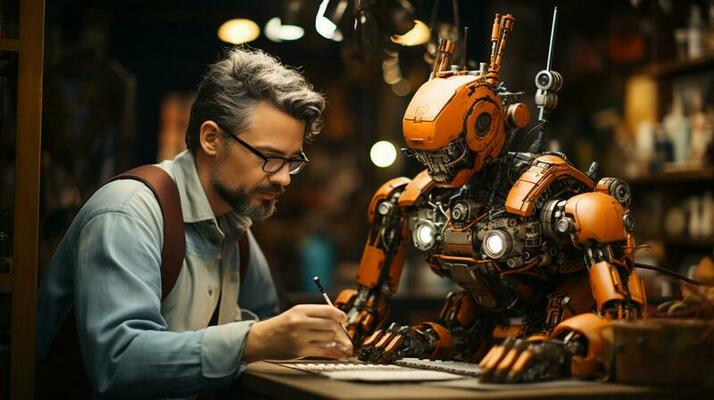
Artificial Intelligence in the Future of Tunisian handcrafts


Today, artificial intelligence (AI) is transforming craft professions by optimizing the design and production of creations. AI-powered computer-aided design (CAD) tools enable craftsmen to create more precise and innovative designs by analyzing thousands of models to suggest improvements and alternatives. This stimulates creativity by offering inspiration based on current trends, while making product customization more accessible by analyzing customer preferences. In addition, these tools optimize the manufacturing process by identifying inefficiencies and simulating production steps, thus reducing material waste and improving productivity. By making these technologies more accessible, even to less experienced craftsmen, AI offers significant opportunities to improve their competitiveness in the marketplace.
Emerging Possibilities with AI
The future of artificial intelligence in the craft industry is promising, as technologies become increasingly integrated and accessible. For example, intelligent 3D printers could revolutionize the industry by enabling craftsmen to produce complex parts with unrivalled precision, while dramatically reducing production time. This would not only increase productivity, but also foster design innovation by making previously difficult shapes and structures easily achievable. What's more, integrating AI into the creative process could offer supporting tools that help craftspeople explore new ideas and realize their visions with greater flexibility. This evolution could transform the crafting industry landscape, enabling advanced customization and responding more effectively to customer needs.
Improving Craft Products with AI
AI is excellent at analyzing market trends, providing artisans with invaluable information for adapting their creations. AI tools enable artisans to analyze data from social media, online sales platforms and specialized blogs to identify the most popular styles, colors and materials. This analysis not only helps to keep abreast of consumer preferences, but also to anticipate future trends, which is essential in an ever-changing market. Platforms such as Google Trends or sentiment analysis tools collect online discussions on various products, helping artisans to adapt their collections to meet market expectations.


Personalized Product Recommendations
With artificial intelligence, it is now possible to offer personalized solutions tailored to each customer's preferences. AI algorithms can analyze user behavior data, past choices, and interactions to design custom models. For example, based on individual preferences such as colors, styles, and materials, AI can recommend products that perfectly match customer expectations. This approach allows artisans to create unique products that directly address their clientele's desires, thus strengthening engagement and customer satisfaction. By integrating computer-aided design tools, artisans can quickly adjust their creations based on feedback and observed trends, offering a personalized shopping experience.
AI-Powered Portrait Art: Portrait of Edmond de Belamy
The Portrait of Edmond de Belamy is a striking example of how artificial intelligence is entering the world of art and craftsmanship. Created by the Paris-based art collective Obvious using a generative adversarial network (GAN), this portrait was produced by an AI that studied thousands of classical portraits to create a new, entirely unique artwork. What makes it particularly remarkable is that it was sold for $432,000 at Christie's in 2018, far exceeding expectations. This sale marks a milestone in the integration of AI in creative industries, demonstrating that AI-generated art is not only technically impressive but also holds significant value in the art market. The Portrait of Edmond de Belamy opens up discussions on the role of AI in creative expression, challenging traditional notions of authorship and craftsmanship.


In conclusion, the integration of artificial intelligence in the field of craftsmanship is transforming both creative and commercial practices. With the help of design tools, artisans can experiment with innovative designs and customize their products based on customer preferences.
